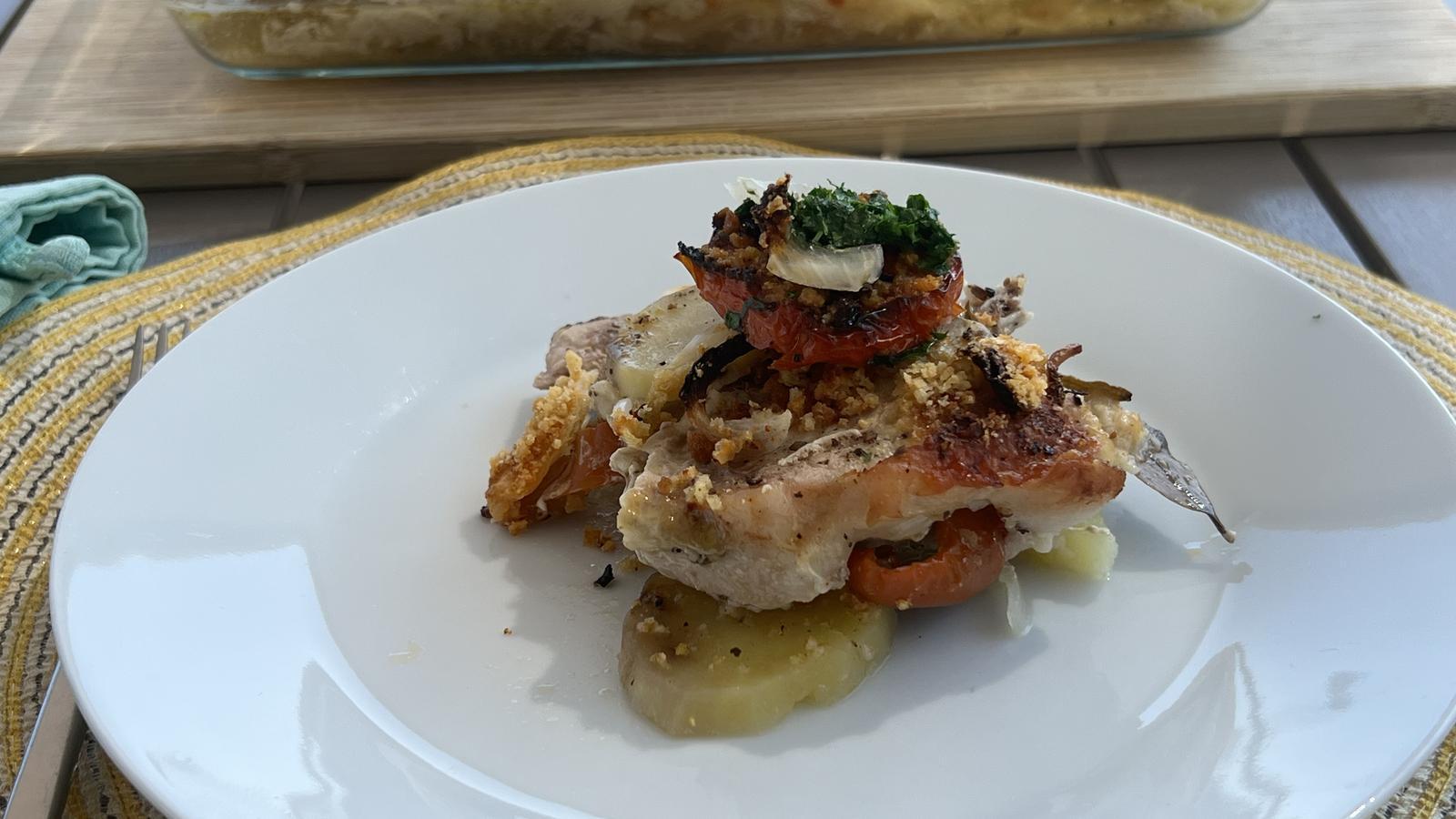Cut the potatoes into round slices, approximately half a centimeter thick. Season with salt and pepper. Cut the onion into julienne strips and the pepper into thin pieces. Spread oil on a baking tray and place a layer of potatoes, an onion, and a layer of pepper. Place the warm ribs on top and cover with another layer of potatoes and an onion. Cut the tomatoes in half and distribute them throughout the baking tray. Chop the garlic and parsley and place a spoonful on top of each tomato. Sprinkle with peppercorns and crushed biscuits. Add the milk or water. Drizzle with a little oil and bake in the oven at 180°C for about 45 minutes, making sure to add water so it doesn't dry out. It's important that the potatoes are tender and the meat is tender.
Baked pork ribs
Despite the advances, the wood-fired oven maintains a gastronomic and cultural value that technology has not replaced.


PalmAt the back of the room was the wood-burning oven, the shovel, the burjons, a large mouth that swallowed the raw bread to spit it out cooked and aromatic, the palate, the best bread I've ever tasted. A small room above served as a soft place, and on one side rested the patera and the dusty linen rags. A frozen image of a world that no longer exists, a yellowed postcard that creaks so much the papers certifying that the oven's heat was sufficient.
Ovens are one of the oldest and most important inventions in the history of cooking and, in fact, have a relevant role in the evolution of food because they allowed raw ingredients to be transformed into more digestible and tasty foods. The first examples were pits or pits dug into the ground where embers or hot stones were placed, which were covered with earth to retain heat for hours. With the Neolithic and the expansion of agriculture, fixed structures made of mud and brick were developed that allowed for more homogeneous firing; from these designs, still current models such as the tandoor and the conical ovens of the Near East.
In classical antiquity, the Greeks and Romans perfected the closed-chamber oven with a front opening, spreading it throughout the empire and consolidating the communal oven model. In medieval Europe, these ovens, built of stone and heated by wood, operated by residual heat and were often for communal use. Between the 16th and 18th centuries, their construction was improved, allowing air circulation to increase their efficiency. The Industrial Revolution introduced cast iron ovens and, later, gas ovens. In the 20th century, electric and steam ovens allowed for very precise temperature control, while industrial systems incorporated automatic regulation and digital programming. Despite these advances, the wood-fired oven maintains a gastronomic and cultural value that technology has not replaced. In fact, and fortunately, we can still enjoy some bakeries that use them to bake their products or enjoy them at home.
Slow cooking and concentrated flavor
In the traditional cuisine of the Balearic Islands, the oven is not only the tool for bread and pastries, but also the great ally for slow-cooked dishes with concentrated flavor, especially roasts, greixoneras, and other stews. The oven's even heat transforms meats, fish, and vegetables into preparations with a tender texture, with a natural caramelization that is difficult to achieve with other methods. In Menorca, the cuisine oven ace It is one of the most representative expressions of its gastronomy, to the point that the oven is not just a cooking method, but almost a culinary category in its own right. Thus, we find the oven dishes characteristic of Ciutadella, which are the same as the pots in the oven of the eastern part of the island. The pot, or oven dish, was and is a common dish in everyday cooking with many variations and many common features. Important is the use of round-cut potatoes, which are placed as roofs or covers. Some add onion or pepper, others also add carrots. On top is meat or fish (octopus, pork chop or meat, shrimp, skate, cod, etc.), followed by halved tomatoes. In some homes, another roof of potatoes is placed before the tomatoes. It is important to temper the ingredients well and add water or milk to the oven basin so that they confit during cooking. Another important element is the chopped garlic and parsley that crowns the tomatoes and the breadcrumbs.
For today's recipe, I've made a variation based on the recipe from Marga Pons Castejon's mother, a good friend who has cleared up many questions about pots and pans. I've added pepper and onion to round out the recipe with seasonal vegetables.
l 4 or 5 medium potatoes
l 4 pork chops
l 4 tomatoes
l 2 onions
l 1 pepper
l Parsley
l Garlic
l Bread or capolada biscuit
Pepper on board
l Water or milk
